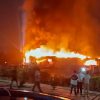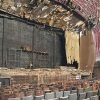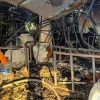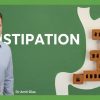Goa is abuzz with excitement as vintage bike and car owners, users, collectors and fans are decking […]
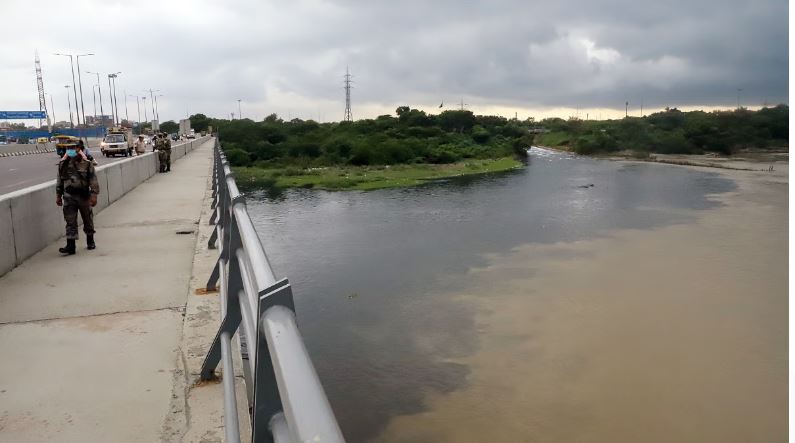
CHOKED DRAINS IN HARYANA THREATEN TO DISTURB ‘WATER SUPPLY’ TO PRESIDENT’S ESTATE! By Sushil Manav
In the News, Mar 16- Mar 22 2024 March 15, 2024By Sushil Manav
Delhi Jal Board tells National Green Tribunal: Haryana’s ‘neglect is impacting Yamuna water & situation could lead to water crisis in Delhi, affecting plants that supply water to residences of President Droupadi Murmu and PM Narendra Modi…
Functioning of Wazirabad and Chandrawal water treatment plants, that supply water to Delhi’s VVIP areas, is getting hindered due to the neglect of Haryana authorities in checking inflow of contents of a drain filled with “trash, garbage, silt, litter and sludge” into the Yamuna, the Delhi Jal Board (DJB) has told the National Green Tribunal (NGT).
Treatment of water is being hindered due to high pollutants and such a situation can lead to a water crisis in the national capital, it added.
The DJB made this submission Tuesday in connection with high pollutant contents in a drain in Sonipat in a case titled ‘Lokesh Kumar Vs State of Haryana’. The petition related to two drains that flow parallel in Haryana’s Sonipat–Kundli, is pending before the NGT. In an action taken report (ATR), the Haryana irrigation department’s engineer-in-chief Bijender Singh listed a series of actions, including a police complaint against a senior manager of the Haryana State Industrial and Infrastructure Development Corporation (HSIIDC) for alleged neglect in curbing the pollution.
According to a senior Haryana irrigation official, the drain known as ‘Drain 8’ — that branches off from the Western Yamuna Canal near Garhi Bindroli village of Haryana’s Sonipat district — supplies about 300 cusecs of water to Delhi.
The drain, about 25 km in length, carries Delhi’s share of water and empties into the Yamuna at Palla, a village in northwest Delhi where the river enters Delhi’s territory.
This drain runs well till ‘Drain 6’ intersects it about 5 km downstream of the point where ‘Drain 8’ originates from the Western Yamuna Canal. About 43 km in length, ‘Drain 6’ carries industrial, domestic effluents from Sonipat and Samalkha area of Panipat district.
For nearly 10 km, the two drains run parallel to each other and the pollutants of the often overflowing ‘Drain 6’ leach into ‘Drain 8’.
After running parallel to ‘Drain 8’ for 10 km, ‘Drain 6’ then gets diverted into the Narela drain. The effluents of this drain fall into Yamuna via Najafgarh drain at Signature Bridge.
Water discharged by ‘Drain 8’ into the Yamuna at Palla flows 21 km downstream till Wazirabad pond where it is treated for supply to VVIP areas which includes the President’s Estate and the Parliament area, besides other prominent state-owned VIP housing units.
ThePrint reached Haryana irrigation department engineer-in-chief Bijender Singh via calls for comment but had not received a response by the time of publication. This report will be updated if and when a response is received.
DJB vice-chairman and Aam Aadmi Party (AAP) leader Somnath Bharti told ThePrint that the Bharatiya Janata Party (BJP) government in Haryana led by Chief Minister Manohar Lal Khattar has not done much to address the problem of contamination in the drains despite several letters by the Arvind Kejriwal-led government of the NCT of Delhi.
“Water released from Haryana into the Yamuna is contaminated, and this has adversely affected production capacity of water treatment plants at Chandrawal and Wazirabad. There is high ammonia content in the water due to which production capacity has reduced to 40-50 percent, as we don’t have in-built facilities to treat high levels of ammonia,” he said.
Bharati alleged that this was being done deliberately by the Haryana government to tarnish the Delhi government’s image. “First, the Haryana government is not increasing the share of water. To add to the problem, contaminated water is being released from the drains. This is being done deliberately to show the Delhi government in a bad light. We have requested them to address the problem, but little has been done so far,” said Bharti.
On 22 December, the NGT had ordered the Haryana irrigation department and DJB to show cause as to why action must not be initiated against them. It had also asked them to take remedial measures and submit a report on the petition filed by Lokesh Kumar.
What DJB & Haryana officials submitted
In its report filed Tuesday, the DJB submitted that ‘Drain 6’, which is maintained by Haryana, is not being cleaned and dredged regularly.
“Being poorly maintained, Drain 6 is in a very critical degradation condition. Water flowing in Drain 8 is comparatively clean, which merges into Yamuna River. Drain 6 overflows and leaches to Drain 8 and pollutes the same,” the DJB said in its report.
It added that since the issue concerning ‘Drain 6’ falls under the purview of the Haryana government, it requires action from authorities in Haryana.
“However, their neglect is affecting the water quality in Drain 8, which in turn impacts the Yamuna water reaching Wazirabad pond. Treatment is hindered due to high pollutants. This situation could lead to a water crisis in Delhi, particularly affecting the production of water at Wazirabad and Chandrawal Water Treatment Plants (WTPs). These plants supply potable water to important areas such as the President’s House, Prime Minister’s House, the Honorable Supreme Court & High Court, NDMC, and others,” the DJB submitted.
It also attached copies of eight letters written to the Haryana irrigation department between 10 January, 2023, and 21 February, 2024, and five written to the Haryana State Pollution Control Board between 29 December, 2023 and 5 February, 2024, in this regard.
In all these letters, the DJB drew the attention of authorities in Haryana toward the increasing pollution in ‘Drain 8’ leading to an increase in ammonia in the Yamuna water reaching Wazirabad pond.
Regarding the present status of ‘Drain 6’, the DJB stated that there was no visible improvement in its physical condition. It also attached copies of the test reports of the joint sampling conducted by the DJB and the Haryana State Pollution Control Board that confirmed the presence of more than 1 mg per litre of ammonia contents in the samples.
According to the Indian Standards (Second Revision) IS:10500, the maximum permissible limit of free ammonia in drinking water is 0.15 mg per litre.
In the ATR filed Wednesday, the Haryana irrigation department said that in compliance with the NGT’s directions pertaining to remedial measures, two review meetings were held on 5 and 29 February, 2024, chaired by the chief secretary.
The report submitted by Haryana irrigation department’s engineer-in-chief said untreated effluents and domestic sewage were being discharged from areas under the control of the HSIIDC, municipal corporations, some private agencies, and some villages into ‘Drain 6’.
It added that the department had sent a complaint to the HSIIDC-Barhi police station in Sonepat on 20 February, 2024, for an FIR against HSIIDC senior manager Jagbir Deswal.
Through another letter sent on 15 January, 2024, the Ganaur block development and panchayat officer (BDPO) was asked to take measures to stop discharge of domestic sewage into ‘Drain 6’.
A similar letter was sent to the Sonipat municipal commissioner on 5 January, 2024, it added.
The report also mentioned notices served to the Sonipat municipal commissioner on 13 and 29 February, 2024, and to the Ganaur BDPO on 4 March, 2024, for their failure to curb the problem.
(Edited by Tony Rai)
Courtesy: The Print

